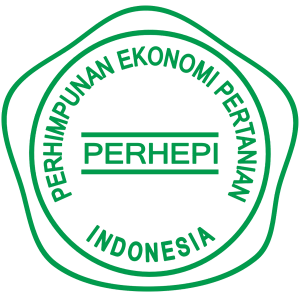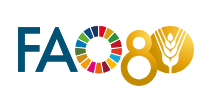The Potential for Organic Matter and Nutrient Recovery from Broccoli Harvest Residues to Support Sustainable Agriculture
DOI:
https://doi.org/10.55173/agriscience.v9i1.166Abstract
The return of harvest residues to the soil is an essential strategy in supporting sustainable agriculture, particularly for horticultural commodities such as broccoli (Brassica oleracea var. italica). This study aims to analyze the potential return of organic matter and macronutrients (N, P, K) as well as organic carbon (C-organic) from broccoli harvest residues to enhance soil fertility and reduce dependence on chemical fertilizers. The research was conducted in May 2025 in Desa Tani, Cipanjalu, Cilengkrang, Bandung Regency, with laboratory testing performed at the Department of Agronomy and Horticulture, IPB University, Bogor. A quantitative and descriptive approach was employed through observation, interviews, and laboratory analysis. The identification results showed that the total fresh weight of broccoli plants was 1,169 grams, of which only 400 grams were harvested, while the remaining 769 grams consisted of leaves, lower stems, and roots left in the field. The dry weight of the harvest residues was 77 grams per plant. With a planting density of 22,000 plants per hectare, the potential nutrient return was calculated using the formula: Nutrient Return = Dry Weight × Nutrient Content × Population per hectare. The nutrient content analysis showed that the broccoli residues contained 7.03% nitrogen (N), 0.90% phosphorus (P), 4.84% potassium (K), and 33.79% organic carbon (C-organic). Broccoli harvest residues have been proven to possess significant nutrient value and can be utilized as green manure to improve soil structure and reduce the use of synthetic fertilizers.
References
Abobatta, W. F., & Fouad, F. W. (2024). Sustainable Agricultural Development (pp. 1–27). https://doi.org/10.4018/979-8-3693-4240-4.ch001
Adimassu, Z., Alemu, G., & Tamene, L. (2019). Effects of tillage and crop residue management on runoff, soil loss and crop yield in the Humid Highlands of Ethiopia. Agricultural Systems, 168, 11–18. https://doi.org/10.1016/J.AGSY.2018.10.007
Akanksha, Singh, G., Dhillon, N. S., & Verma, L. K. (2023). Impact of Nitrogen on Growth and Yield of Broccoli (Brassica oleracea L. var. italica) under Open and Protected Environment. Environment and Ecology, 41(4D), 3049–3053. https://doi.org/10.60151/envec/ojir6814
Artés-Hernández, F., Martínez-Zamora, L., Cano-Lamadrid, M., Hashemi, S., & Castillejo, N. (2023). Genus Brassica By-Products Revalorization with Green Technologies to Fortify Innovative Foods: A Scoping Review. Foods, 12(3), 1–29. https://doi.org/10.3390/foods12030561
Dewi, R. K., Mumpuni, R. P., Nurulhaq, M. I., Pratama, A. J., Wiraguna, E., Mardisiwi, R. S., Situmeang, W. H., Budiarto, T., Saputra, H. K. H., Dewi, R. K., Mumpuni, R. P., Nurulhaq, M. I., Pratama, A. J., Wiraguna, E., Mardisiwi, R. S., Situmeang, W. H., Budiarto, T., & Saputra, H. K. H. (2025). Organic Fertilizer: Indonesia’s Legacy for a Sustainable Future. https://doi.org/10.5772/INTECHOPEN.1008729
Ekbic, E., & Kose, G. (2024). Influence of nitrogen treatments on some nutrient concentration and bioactive compounds of broccoli. BMC Plant Biology, 24(1). https://doi.org/10.1186/s12870-024-05823-w
Gamage, A., Gangahagedara, R., Gamage, J., & Jayasinghe, N. (2023). Role of organic farming for achieving sustainability in agriculture. Farming System, 1(1), 100005. https://doi.org/10.1016/j.farsys.2023.100005
García-Manso, A., Gallardo-Caballero, R., García-Orellana, C. J., González-Velasco, H. M., & Macías-Macías, M. (2021). Towards selective and automatic harvesting of broccoli for agri-food industry. Computers and Electronics in Agriculture, 188. https://doi.org/10.1016/j.compag.2021.106263
García, S. L. R., & Raghavan, V. (2022). Microwave-Assisted Extraction of Phenolic Compounds from Broccoli (Brassica oleracea) Stems, Leaves, and Florets: Optimization, Characterization, and Comparison with Maceration Extraction. Recent Progress in Nutrition 2022, Vol. 2, 011, 2(2), 1–20. https://doi.org/10.21926/RPN.2202011
Goswami, S. B., Mondal, R., & Mandi, S. K. (2020). Crop residue management options in rice–rice system: a review. Archives of Agronomy and Soil Science, 66(9), 1218–1234. https://doi.org/10.1080/03650340.2019.1661994
Huang, W., Wu, J. Fu, Pan, X. Hua, Tan, X. Ming, Zeng, Y. Jun, Shi, Q. Hua, Liu, T. Ju, & Zeng, Y. Hua. (2021). Effects Of Long-Term Straw Return On Soil Organic Carbon Fractions And Enzyme Activities In A Double-Cropped Rice Paddy In South China. Journal Of Integrative Agriculture, 20(1), 236–247. Https://Doi.Org/10.1016/S2095-3119(20)63347-0
Ilahi, H. (2021). Accentuating the Impact of Inorganic and Organic Fertilizers on Agriculture Crop Production: A Review. Indian Journal of Pure & Applied Biosciences, 9(1), 36–45. https://doi.org/10.18782/2582-2845.8546
Islam, S., Busra, J., Sabuj Ali, M., Rahaman, S., Afsar Shawon, R., Towhidul Islam, M., Istiak Hossain Joy, M., Atiqur Rahman Bhuiyan, M., Ali, M. S., Rahaman, S., Shawon, R. A., Islam, M. T., H Joy, M. I., & R Bhuiyan, M. A. (2023). Effect of Different Organic Fertilizer on the Growth and Yield of Broccoli (Brassica oleraceae var. italic). Research in Agriculture Livestock and Fisheries, 10(3), 237–245. https://doi.org/10.3329/RALF.V10I3.70813
Li, H., Xia, Y., Liu, H. Y., Guo, H., He, X. Q., Liu, Y., Wu, D. T., Mai, Y. H., Li, H. Bin, Zou, L., & Gan, R. Y. (2022). Nutritional values, beneficial effects, and food applications of broccoli (Brassica oleracea var. italica Plenck). Trends in Food Science & Technology, 119, 288–308. https://doi.org/10.1016/J.TIFS.2021.12.015
Liu, M., Zhang, L., Ser, S. L., Cumming, J. R., & Ku, K. M. (2018). Comparative phytonutrient analysis of broccoli by-products: The potentials for broccoli by-product utilization. Molecules, 23(4). https://doi.org/10.3390/molecules23040900
Liu, X. (2023). Sustainable intensification: A historical perspective on China’s farming system. Farming System, 1(1), 100001. https://doi.org/10.1016/j.farsys.2023.100001
Lu, X. (2020). A meta-analysis of the effects of crop residue return on crop yields and water use efficiency. PLoS ONE, 15(4), 1–18. https://doi.org/10.1371/journal.pone.0231740
Malobane, M. E., Nciizah, A. D., Mudau, F. N., & Wakindiki, I. I. C. (2020). Tillage, crop rotation and crop residue management effects on nutrient availability in a sweet sorghum-based cropping system in marginal soils of South Africa. Agronomy, 10(6). https://doi.org/10.3390/agronomy10060776
Metwaly, E. (2017). Influence of Phosphorus and Potassium on Growth and Yield of Cauliflower. Journal of Plant Production, 8(2), 329–334. https://doi.org/10.21608/jpp.2017.39631
Muhie, S. H. (2022). Novel approaches and practices to sustainable agriculture. Journal of Agriculture and Food Research, 10, 100446. https://doi.org/10.1016/J.JAFR.2022.100446
Mulyati, Soesetio, R. M. A., Afriadin, Sefiana, R. R., Sabrina, A., & Pasksindra, A. (2021). Inovasi pemanfaatan pupuk organik ramah lingkungan untuk meningkatkan produk sayuran yang bernilai ekonomis. Jurnal Pengabdian Masyarakat Berkemajuan, 5, 997–1003.
Nagraj, G. S., Chouksey, A., Jaiswal, S., & Jaiswal, A. K. (2020). Broccoli. In Nutritional Composition and Antioxidant Properties of Fruits and Vegetables (pp. 5–17). Academic Press. https://doi.org/10.1016/B978-0-12-812780-3.00001-5
Ninkuu, V., Liu, Z., Qin, A., Xie, Y., Song, X., & Sun, X. (2025). Impact of straw returning on soil ecology and crop yield: A review. Heliyon, 11(2), e41651. https://doi.org/10.1016/j.heliyon.2025.e41651
Pandey, V., Patade, V. Y., Pandey, H., & Singh, U. (2024). Residue free cultivation of sprouting broccoli ( Brassica oleracea L . var italica Plenck ) under protected conditions for export market. The Pharma Innovation Journal, 13(6), 132–137.
Panwar, A. S., Prusty, A. K., Shamim, M., & Ravisankar, N. (2021). Nutrient Recycling in Integrated Farming Systems for Climate Resilience and Sustainable Income. November.
Reid, K., Drury, C. F., & Burton, D. (2025). Re-thinking soil nitrogen availability to crops in the context of soil organic carbon. Canadian Journal of Soil Science, 1–7.
Sarkar, S., Skalicky, M., Hossain, A., Brestic, M., Saha, S., Garai, S., Ray, K., & Brahmachari, K. (2020). Management of crop residues for improving input use efficiency and agricultural sustainability. Sustainability (Switzerland), 12(23), 1–24. https://doi.org/10.3390/su12239808
Sayanjali, S., Lu, Y., & Howell, K. (2024). Extraction and Characterization of Cellulose from Broccoli Stems as a New Biopolymer Source for Producing Carboxymethyl Cellulose Films. International Journal of Food Science, 2024(1), 7661288. https://doi.org/10.1155/2024/7661288
Shinali, T. S., Zhang, Y., Altaf, M., Nsabiyeze, A., Han, Z., Shi, S., & Shang, N. (2024). The Valorization of Wastes and Byproducts from Cruciferous Vegetables: A Review on the Potential Utilization of Cabbage, Cauliflower, and Broccoli Byproducts. Foods, 13(8). https://doi.org/10.3390/foods13081163
Soni, R., Gupta, R., Agarwal, P., & Mishra, R. (2022). Vantage. Journal of Thematic Analysis, 3(1), 21–44. http://apeda.gov.in/apedawebsite/
Takahashi, M., Nakano, Y., & Sasaki, H. (2018). Increasing the yield of broccoli (Brassica oleracea L. var. italica) cultivar ‘Yumehibiki’ during the off-crop season by limiting the number of lateral branches. Horticulture Journal, 87(4), 508–515. https://doi.org/10.2503/hortj.OKD-143
Takahashi, M., & Sasaki, H. (2019). Competitive biomass allocation between the main shoot and lateral branches of Broccoli (Brassica oleracea L. var. Italica). Horticulture Journal, 88(3), 401–409. https://doi.org/10.2503/hortj.UTD-073
Tempesta, M., Pennisi, G., Gianquinto, G., Hauser, M., & Tagliavini, M. (2022). Contribution of cauliflower residues to N nutrition of subsequent lettuce crops grown in rotation in an Italian Alpine environment. Agronomy for Sustainable Development, 42(2). https://doi.org/10.1007/s13593-022-00756-w
Torres, J. L. R., Gomes, F. R. D. C., Barreto, A. C., Orioli Junior, V., França, G. D., & Lemes, E. M. (2021). Nutrient cycling of different plant residues and fertilizer doses in broccoli cultivation. Horticultura Brasileira, 39(1), 11–19. https://doi.org/10.1590/s0102-0536-20210102
Tri Indriyati, L. (2018). Effectiveness of Organic and Inorganic Fertilizers on the Growth and Yield of Broccoli (Brassica oleracea var. italica). Jurnal Ilmu Pertanian Indonesia, 23(3), 196–202. https://doi.org/10.18343/jipi.23.3.196
Uwamahoro, H., Kpomblekou-A, K., Mortley, D., & Quarcoo, F. (2023). Organic vegetable crop residue decomposition in soils. Heliyon, 9(3), e14529. https://doi.org/10.1016/j.heliyon.2023.e14529
Yang, Y., Long, Y., Li, S., & Liu, X. (2023). Straw Return Decomposition Characteristics and Effects on Soil Nutrients and Maize Yield. Agriculture (Switzerland), 13(8). https://doi.org/10.3390/agriculture13081570
Yaseen, A. (2018). Effect Of Applied Phosphorus And Potassium And Their Interactions On Broccoli (Brassica Oleracea Var. Italica) Yield And Some Leaf Characteristics. Polytechnic Journal, 8(3), 121–131. Https://Doi.Org/10.25156/Ptj.2018.8.3.241
Downloads
Published
Issue
Section
License
Copyright (c) 2025 Agricultural Science

This work is licensed under a Creative Commons Attribution-ShareAlike 4.0 International License.















